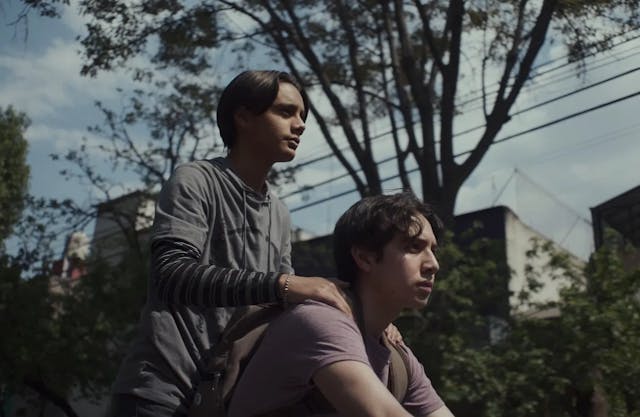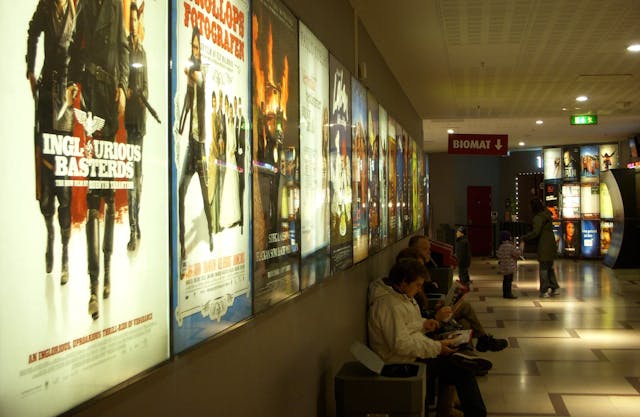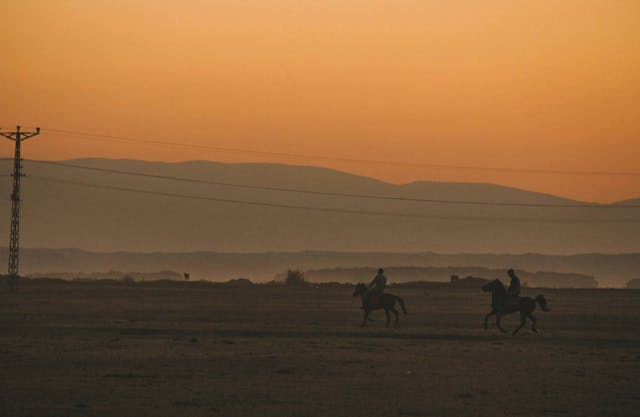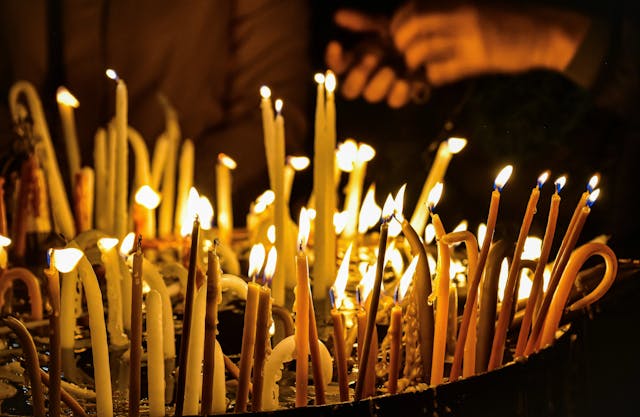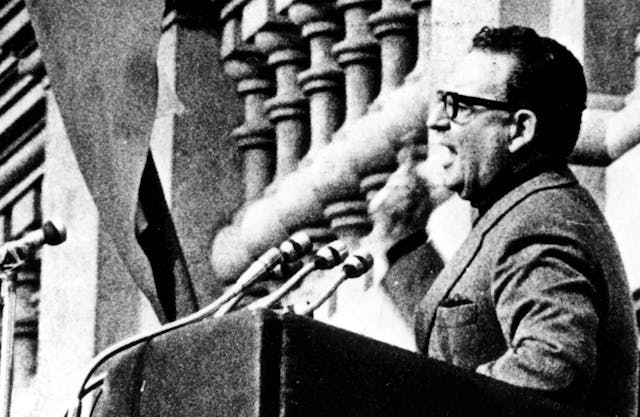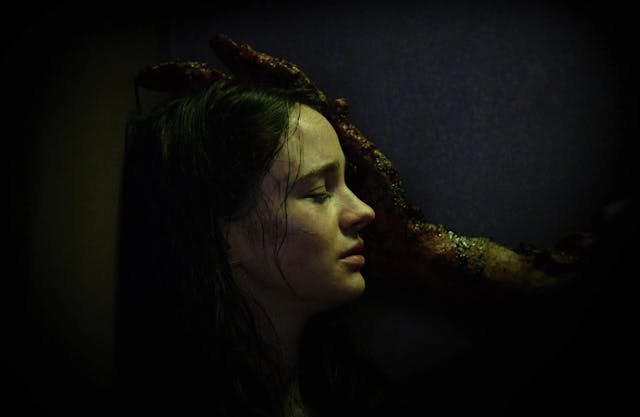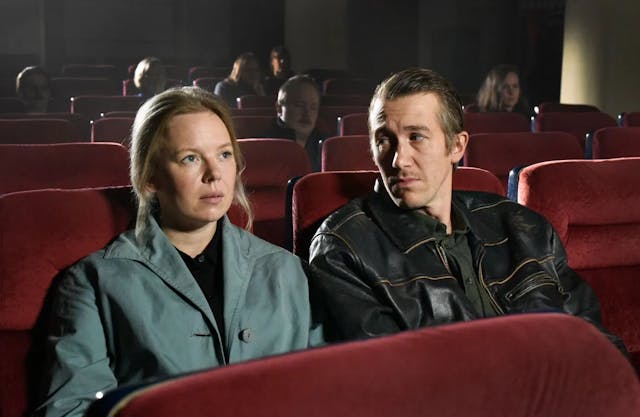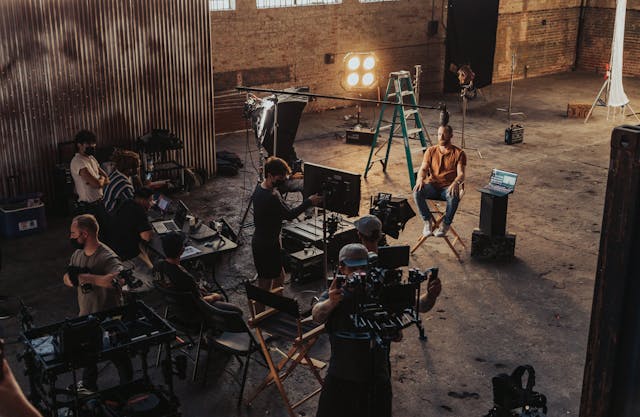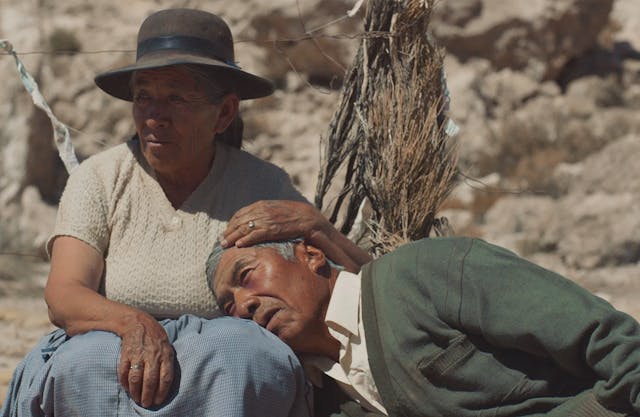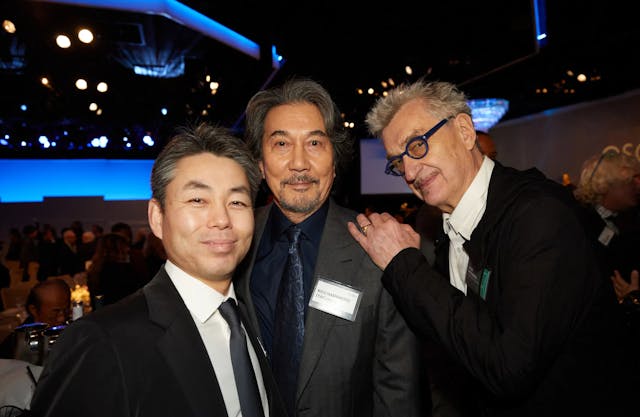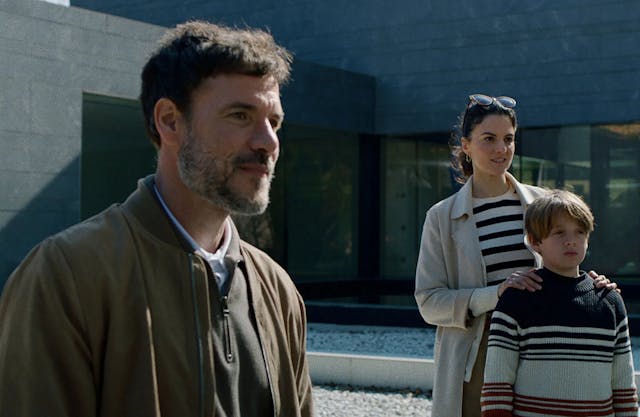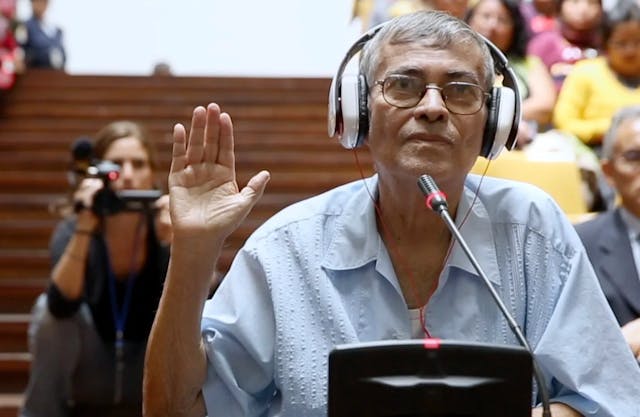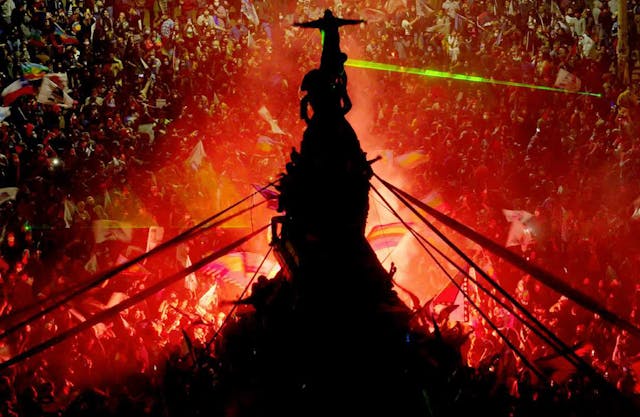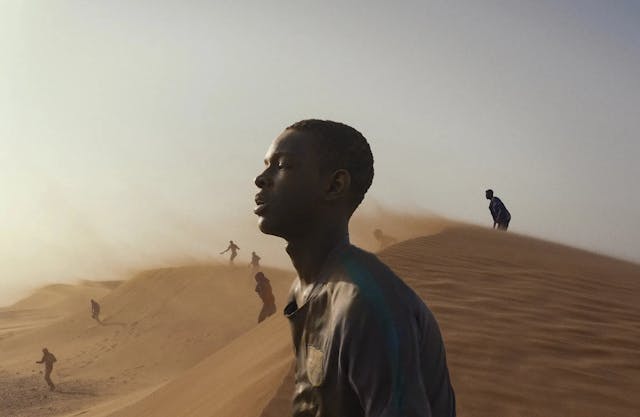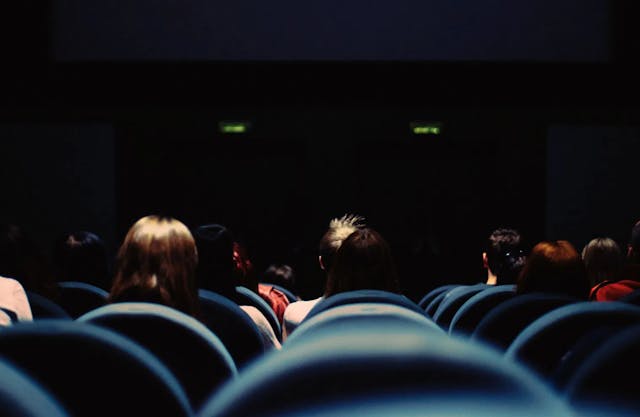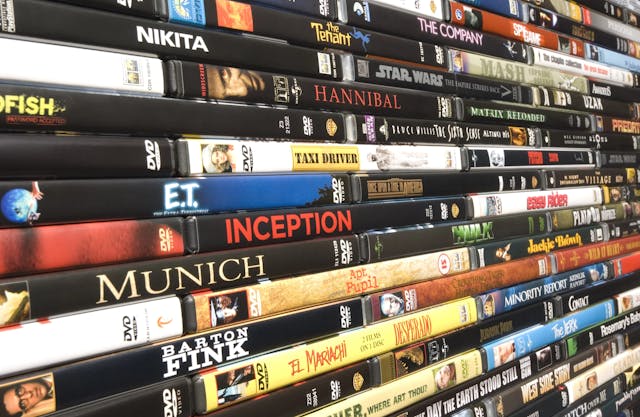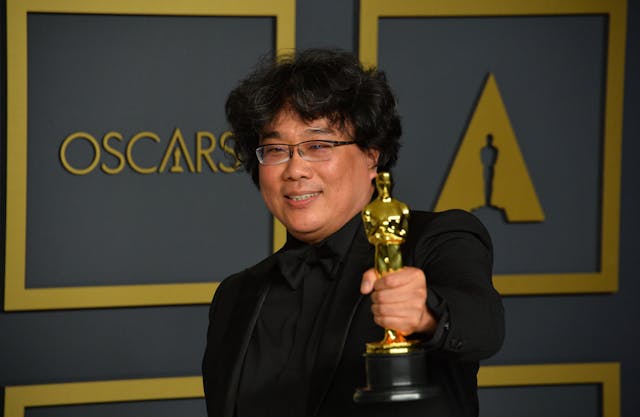"The Settlers": Felipe Gálvez Haberle Takes the Western to Task
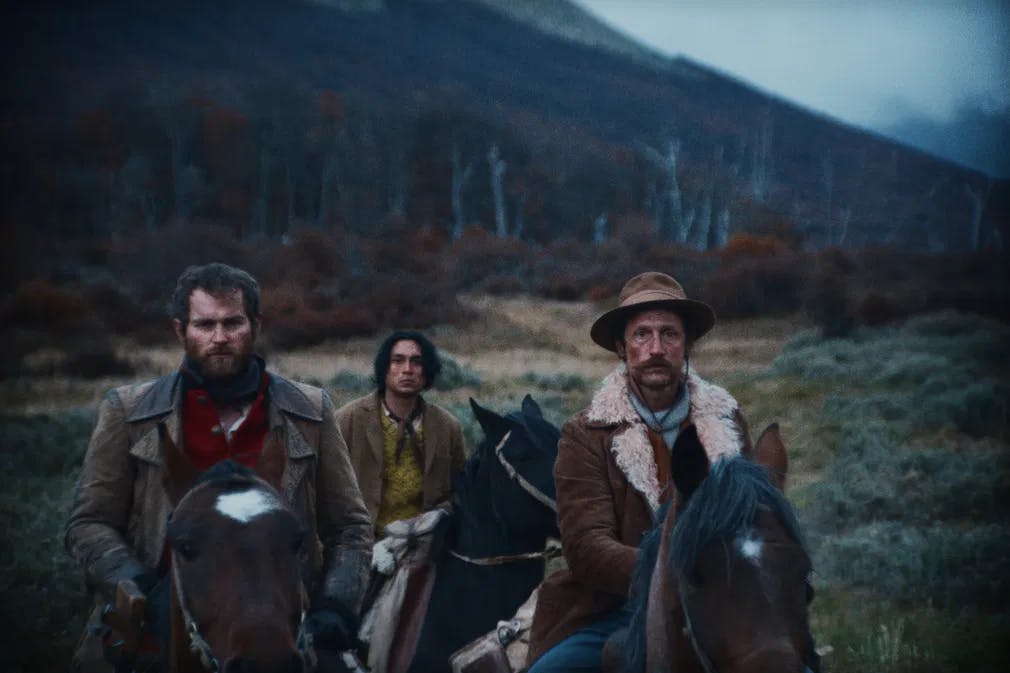
Bloody Western: Mark Stanley, Camilo Arancia, and Ben Westfall in "The Settlers" / Photo courtesy of MUBI.
Chances are, you’ve never seen a Western like “The Settlers.” For one thing, it is a Chilean movie. The South American country chose it to compete for an Oscar nomination in the International Movie category. It is easy to see why. Beyond its undeniable technical quality, the movie invokes the myths of the most American genre. But if you come looking for the heroic exploits of frontier men, you are in for a rude awakening. “The Settlers” of the title are basically hired assassins out to do the bidding of José Menéndez (Alfredo Castro), a greedy landlord who wants to exterminate the indigenous Selk’nam people. You see, they keep eating his sheets, and that is most inconvenient. Since Castro is white, and the Selk’nams not, this virtual death sentence is never put into question.
Director Felipe Gálvez Haberle's ambitious first feature film dares to take the killers' point of view - remember, depiction does not equal endorsement. The trio represents the powers that colonized the world. The pack's leader is a veteran British Colonel, Alexander MacLennan (Mark Stanley). Cowboy Bill (Benjamin Westfall) is recruited from Texas for his Indian-tracking skills. Segundo (Camilo Arancibia) gets hired for his shooting skills, even if you can tell in his conflicted eyes how guilty he feels about killing people so close to him. He is half Indian and half White, and a little bit of Whiteness goes a long way in these circumstances.
They might enjoy impunity, but that does not mean they will have it easy. Life is worthless in these lands. That much is established in the first scene, when a foreign ranch hand is executed after accidentally losing an arm while setting up a fence. You see, a one-armed man is useless to work.
We spoke with Gálvez on the eve of the theatrical premiere of the movie in the US about his beginnings as a film editor, the challenges of shooting in Tierra del Fuego, and how the politics of the Western genre play into his mission to denounce the erasure of a shameful chapter in History - Spoiler alert: not just Westerns are propaganda! The movie had a great run at film festivals, coming out of the gate and winning the FIPRESCI Prize in the Un Certain Regard sidebar at the 2023 Cannes Film Festival. Haberle was also in the run as Best Director for the Un Certain Regard award and the Golden Camera. The scandalized reactions on social media lit up by his commentary about how the Western is a propaganda genre should be tempered by the knowledge that he also was recognized at the Almeria Western Film Festival, winning the "Prize for Technical and Artistic Contribution to the Western Genre." Yes, there is a Western film festival in the famous Spanish town where Sergio Leone shot "A Fistful of Dollars" (1964) and "The Good, The Bad, and the Ugly" (1966). You can chill out. Gálvez Haberle does not hate westerns; he is just considering how they fit in history. You can appreciate a genre and be critical of it.
A Long Road to the Director's Chair
Popflick: Felipe, “The Settlers” is your first feature film, but you have over a decade of experience as a film editor. Why did you cross over into directing?
I always wanted to be a director. I went to film school because I wanted to direct. I was not sure about what kind of movie I wanted to do or what cinema I wanted to do. I knew I wanted to work on a film. The dynamic of being on the set did not enthrall me in college, so I decided to keep learning direction through editing. The editing suite is a more sheltered place, and you get to work one-on-one with the director. You learn much about script, image manipulation, sound, music, and structure. Even from the mistakes and successes of others! You understand what works in a performance and what doesn’t. So, it’s a great school.
Then, I came up with the idea of this movie, and I worked on it for ten years, writing parallel to my day job as an editor. I did not study scriptwriting a lot, but learned it through editing movies. I used that experience while writing and also on the set. You understand what you really need to shoot and how to react when something doesn’t work. You decide fast not to do it, because you know you won’t use it, you already discarded it in your head, and move on to re-write on the spot for next week, because you let go of something that does not work.
My cinema style manipulates images. I don’t believe in the purity of images, sound, or color. Cinema is artificial, and I believe in artifice. I think cinema is not a machine to portray truth but to distort and change it.
Popflick: What draw you to the chapter of Chilean history that inspires “The Settlers”?
Felipe Gálvez: About 15 years ago, I was reading on a news website a story on the Selk’nam genocide, and it was illustrated with this black and white picture of people killed in a massacre, made to pose. They used to take photos of this kind with the corpses after massacring them. It was a strong image, and I did not know of that history. When I saw that picture, I wanted to learn more about it and started investigating. I realized I wanted to do a movie from the point of view of them, those who hunted these people down, those who killed the indigenous people. It was a story erased from Chile’s history books. So many historical episodes have been erased from Chile’s official history.
I wanted to go to this foundational chapter in the story of the country. It was born and seeped into conflict. And then, I started to watch this picture as a piece of a Western and set out to delve into the genre. I realized Western and colonization are like brothers. The genre started as a propaganda tool for those processes of colonization in America, transforming them into spectacle and entertainment, something “civilized.” It was fascinating to me. When they ask me if I investigated history, I say I studied more film than history. I am a filmmaker, and what attracts me is how the film approaches this piece of history.
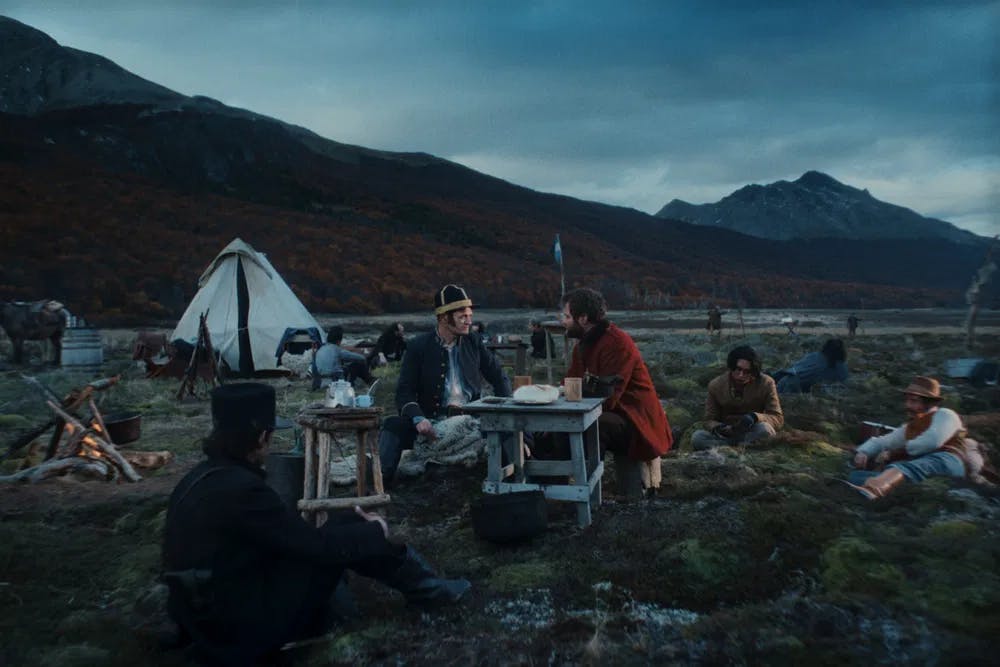
Border Allies: the mercenaries hired by a Chilean landlord pall around with Argentinian soldiers in "The Settlers" / Photo courtesy of MUBI.
The Perils of Shooting in Tierra del Fuego
Popflick: I understand you shot in Tierra del Fuego, in territory that still belongs to descendants of Menendez, the concessioner who oversees the massacre of the Selk’nam. Was it hard to get their permission? I would think they would not go for it!
Felipe Gálvez: I did not film in their land. I did shoot in Tierra del Fuego, and they own most of the territory but not all. Very few lands do not belong to them, and that’s where I shot like on the airport grounds. It was hard to find places, so we had to go to public lands and some private, like a trash deposit. But then again, what would I gain shooting in the Menendez’s land? Just vastness, open wide shots of nothing but fields. But yes, It was hard and frustrating to find where to shoot. Such vast lands and so little space where we could work. It was an absurd situation.
Popflick: Before working on “The Settlers,” your Director of Photography, Simone d’Arcangelo, shot “The Tale of King Crab” in Tierra del Fuego. How did his knowledge of the territory help you?
Felipe Gálvez: I think the cinematographer is a most important collaborator. As a director, I give the images the utmost importance. It was a great help that Simone already had worked in Tierra del Fuego because he understood the weather and could warn me about it. When we started shooting a particular scene, we had to finish it, no matter what. The scene where Colonel Martin shows up was eight or nine pages, and we shot it in a stretch of four to five hours. It was killing me! Imagine waiting nine years to make a movie and rushing like that. The normal thing would have been to shoot four pages, and we did nine. About 10 minutes of screening time. It was like torture. I wanted to kill myself, the actors, everyone! But when you start, you have to finish, because the weather can change so much.
It was a nighttime scene, and it was so hard because the cold was unbelievable, and the wind was killer. As soon as we finished filming, at about 2:00 am, a massive storm hit and totally destroyed the set. Not a thing was left. It would have been impossible if I had divided the shooting into two working days. So, Simone knew we were vulnerable to that kind of problem. You start shooting with the sun; then it rains, then it snows…here come the clouds, the wind takes them away, and they come back…continuity is almost impossible, but he already had dealt with that. That helped, and also how fast he works. He prepared me psychologically to understand we would always be playing catch up with the weather. There, my experience as an editor helped out, too. As an editor, you are open to face each day with openness, facing each morning reconciled with doing what you can do. There’s what’s written in the script and then what the weather allows you to do.
Simone also has a lot of experience. He worked for many years with Vittorio Storaro, and he has an amazing skill in handling color. I had this idea to use autochrome, referencing the first experiments in photography by the Lumiere brothers. He sees images like that and sees the potential, how to go even further. I wanted to work with the aesthetic of painted-on photographs, and he took this idea to the extreme, aiming for outright painting. So, the image mutates throughout the movie. It begins as something pictorial and ends up in photography.
Popflick: At one time, you wanted to make the movie in black & white. What made you change your mind?
Felipe Gálvez: I once talked with a producer - not our actual producer - who told me, “You don’t wanna make this movie! It’s ambitious, violent, and in black & and white? Your first movie? You don’t have the experience to pull that!” And he was right.
I started thinking that black & white was a representation of realism. Signs only exist in black & white. I wanted the movie to be realistic. Over time, my vision for the script changed. Not the script itself. That was ready six years ago and hasn’t changed since then. What changed was my view of it. I don’t think the movie is a portrayal of reality anymore. It’s not a historical document just because you feel like it happened while watching it. Black & white would’ve taken us to realism, to the pretension of historical archive. I want it to look artificial because the film distorts it. Film lies. That’s why the colors look weird. The clothes look weird, and the characters, too. Everything is distorted, not just the cinematography. All the clothes and their color look strange. We used chromatic error as a tool. Even the sound. The whole movie was dubbed in a studio. We did not use direct sound. Everything you hear was recorded in postproduction. Everything is artificial: the music, the graphics, the titles. Those have more value for their graphic nature than the words that make them.
Popflick: Did you use those textual chapter headers to make the movie feel as a literary exercise come to life?
Felipe Gálvez: No. For me, it's an eminent cinematographic exercise. It's more graphic than literary. There's a moment when I realize I want the movie to reach the widest audience possible, and I look for anything that can help. Those texts can help audiences unfamiliar with what happens in South America to find their bearings. In South America, you don't need them to understand what happens, but they can help elsewhere. What they say is not important, but that they are there. That's why they are red and take up the whole screen when they appear. They take you back to '70s westerns.
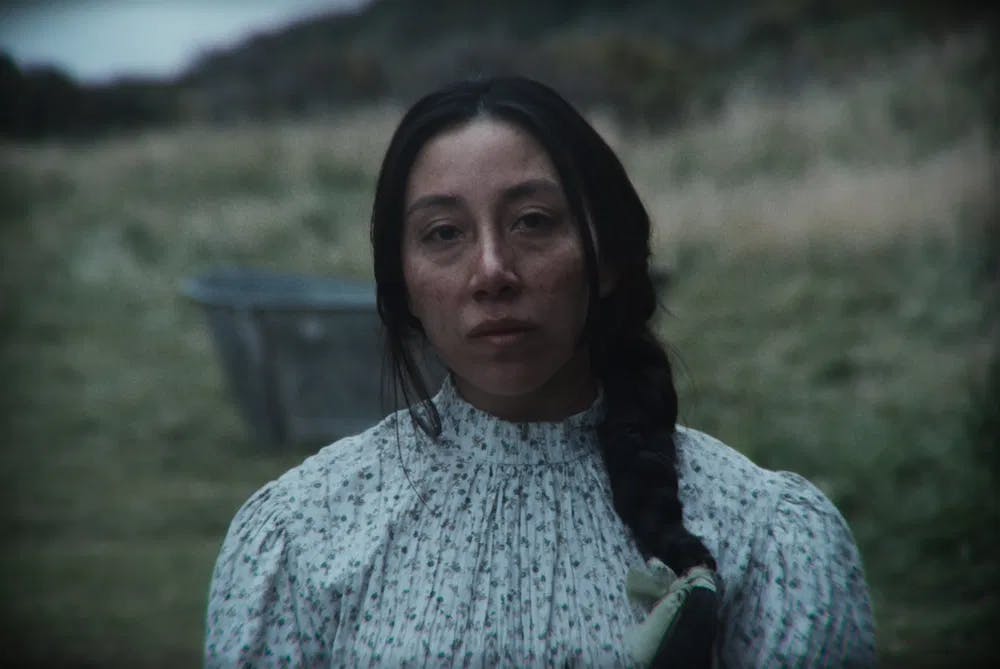
Assimilate or die: Kiepja (Mishell Guaña) becomes Rosa but can't shake off the trauma in "The Settlers" / Photo courtesy of MUBI.
Popflick: The three main characters have a symbolic character. We have a Brit, an American, and a Chilean mestizo. How did you work with the actors to transcend the symbolic nature and make them work as human beings? Were you able to rehearse at all?
Felipe Gálvez: The truth is that we did everything on the run. We put all the budget into the shooting, so we did not have much of a preproduction. Actors came in at the last minute possible. We were just coming off the pandemic, so they came on the verge of the beginning of shooting. We only had two days to rehearse, and that included costume tests. I think of the characters more as archetypes. They come with much historical baggage, and you instantly understand who they are. I think it’s like those jokes based on nationality: a British, an Argentinian, and a Chilean walk into a bar…These are three “heroes” from literature and cinema. First, there’s the military hero from the XIX and early XX-century adventure novels. He is displaced by the cowboy, coming from American cinema. Then, there is the anti-hero from New Latin American cinema, who is poor, uneducated, maybe even illiterate. He comes from movies from Glauber Rocha or “The Jackal of Nahueltoro” (Miguel Littin, 1969) and Cinema Novo with its Hunger Aesthetics.
Violents Ends
Popflick: These might be heroic archetypes, but you demystify them by showing the effects of the violence they unleash. Commercial cinema usually celebrates the violent exploits of the hero as a weapon to exert justice. That’s not what you do here. Did you want to indict violence?
Felipe Gálvez: I don’t believe in heroes as such. Movies people compare to “The Settlers” are much more violent. What happens is that there are no heroes in my film. The audience expects someone to rise as a hero, which never happens. The audience expects one, whites for one, to think, “Yes, this is the guy he should follow,” but no. It’s hard to make a Western with no heroes because otherwise, I support myself on the conventions of the genre: its language, rules, and humor. Even the animals!
I'd say the representation of violence in "The Settlers" is an exercise. I wanted to show different kinds of violence. There's physical violence in the first act. There's verbal violence in the scenes taking place in the house when words become like bullets. Then, there's systematic violence. Who decides that? And who chooses to say, 'Well, let's move on and do like none of this ever happened?' This is how history gets manipulated.
I think we have, like, four scenes that are actually violent, and it seems like they are effective. It seems they are impactful. I used as a reference that famous scene in “Un Chien Andalou” (Luis Buñuel, 1929), the one where a blade cuts an eyeball. Then, you are not just seeing a movie; the image seeps into your unconscious. These are also tricks of editing. You show something very shocking for a little time, and it feels like the movie is much more violent than what it’s really there. Sometimes, people mention scenes that are only talked about in the film!
Popflick: The worst massacres are only described verbally! There’s the whale episode, which we don’t know if it happened, and the other one is described in a speech towards the end. Were you ever tempted actually to stage them as action?
Felipe Gálvez: Never! I am not keen on filming a massacre, which is a big irony. People complain about how violent the movie is and then take you to task for not showing the whale scene! But I wanted to segue into another reflection. I did not need to keep those characters company, not for one more second. It’s hard for me to understand why some people wanted to continue with them. Up to the point where you last see them, that was my limit.
Popflick: The massacre they execute in the movie is staged on a foggy morning. You don’t see the killings.
Felipe Gálvez: And yet, you tell me it’s too violent. We work with violence in a strange way in this movie. There is an idea that the film is violent and too violent in its development. A question that interests me very much is: what do people think is the most violent scene in the movie? Each audience member has their answer, but many say it’s the last scene. And it’s such a simple scene! You have graphic violence elsewhere in the movie. If you want to see something like the whale episode, you can see “The Revenant” (Alejandro Gonzalez Iñarritu, 2015), where it’s like an action set piece. But that’s not what I wanted to show.
I wanted to arrive at a particular construction of the concept of violence, which is the sum of all violences. There is physical and verbal violence, and also the violence implicit in the denial of history that these things ever happened. And this is very real. We still see this every day. It’s not the make-believe violence of the screen, nor the one embalmed in the past. It continues to happen, and we try to ignore it.
Westerns United in Revisionism
Popflick: It’s a coincidence that your movie and Martin Scorsese’s “Killer of the Flower Moon” premiered at the Cannes Film Festival. One could say they deal with similar themes and arrive at an equivalent conclusion. Did you feel any kinship?
Felipe Gálvez: I feel closeness in how theme us to re-read cinema. How many Westerns were made without telling this story? Or took this viewpoint? Both movies consider the idea of how history gets told, who tells it, and how it becomes a spectacle. In that sense, the movies are related. I don’t feel like a brother of Scorsese. More like a son! We are a little over 100 years from the birth of cinema. I think it’s normal to revise it, both cinema and the Western genre. It’s not just about heroes. We may need to keep probing up heroes, but they fall apart once you watch them closely. I like this idea of presenting characters that seem like heroes but end up coming apart.
Popflick: Are you going back to editing, or you’ll direct more movies? What’s your next project?
Felipe Gálvez: I would love to edit a friend’s movie, but the truth is that I want to keep investigating for a new film. I’m very interested in propaganda. Are there other genres that work as propaganda, like Westerns might do? The era of the cowboy as a hero closes with the Cold War. Then, the spy takes his place, and the spy thriller becomes a propaganda genre. In Chile, we have many stories connected to the Cold War. I’m writing a new movie about the trial against dictator Augusto Pinochet in London, told from the point of view of the lawyers who defended him.
* "The Settlers" is now playing in theaters. Streaming soon on MUBI.
Want to get an email when we publish new content?
Subscribe today
